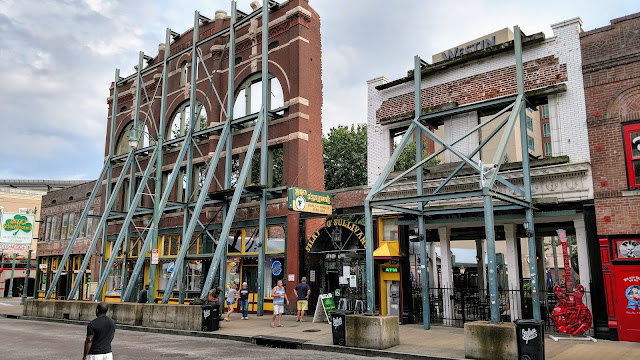Several blocks are blocked off so you can walk in the street. Beale Street is the heart of blues music. It was created in 1841 by Robertson Topp with the west end primarily full of trade shops who traded with traffic on the nearby Mississippi River and the east end an affluent suburb. In the 1860s, young black men began performing on the street. A prominent early group was the "Young Men's Brass Band".
Renovation occurred in 1890 with the addition of the Grand Opera House and the addition of Church park. The park had an auditorium that could seat 2000. In the 1900s, the street had many restaurants, clubs, and owned by black Americans. From the 20s to the 40s, the Memphis Blues style developed with Louis Armstrong, Muddy Waters, Albert King, Memphis Minnie, Rufus Thomas, B.B. King, and Roscoe Gordon among others. In the 60s, Beale Street fell on hard times and deteriorated even though several blocks were named a National Historic Landmark. In 73, a corporation was formed to renovate the area as a racially diverse cooperative effort. 1982 saw a management company hired to help locate new tenants and in 2012, the city of Memphis took over day to day management after a court decision.
The trolley system is temporarily closed due to renovations on one of the streets but they have "trolley buses" which provided us with a good look at this area of town.
There are businesses operating behind these shored up building fronts.
We shared a pizza at the Blues Hall while listening to a live musician playing near us.
There are a few landmark signs telling some of the history of the street and business.
This crocheted art was located along the street near where we parked.
We had a nice view of the river from our parking area.













No comments:
Post a Comment
Thanks for commenting.